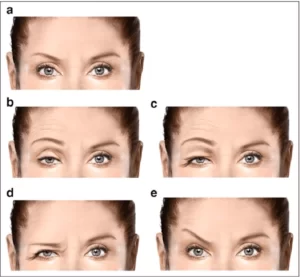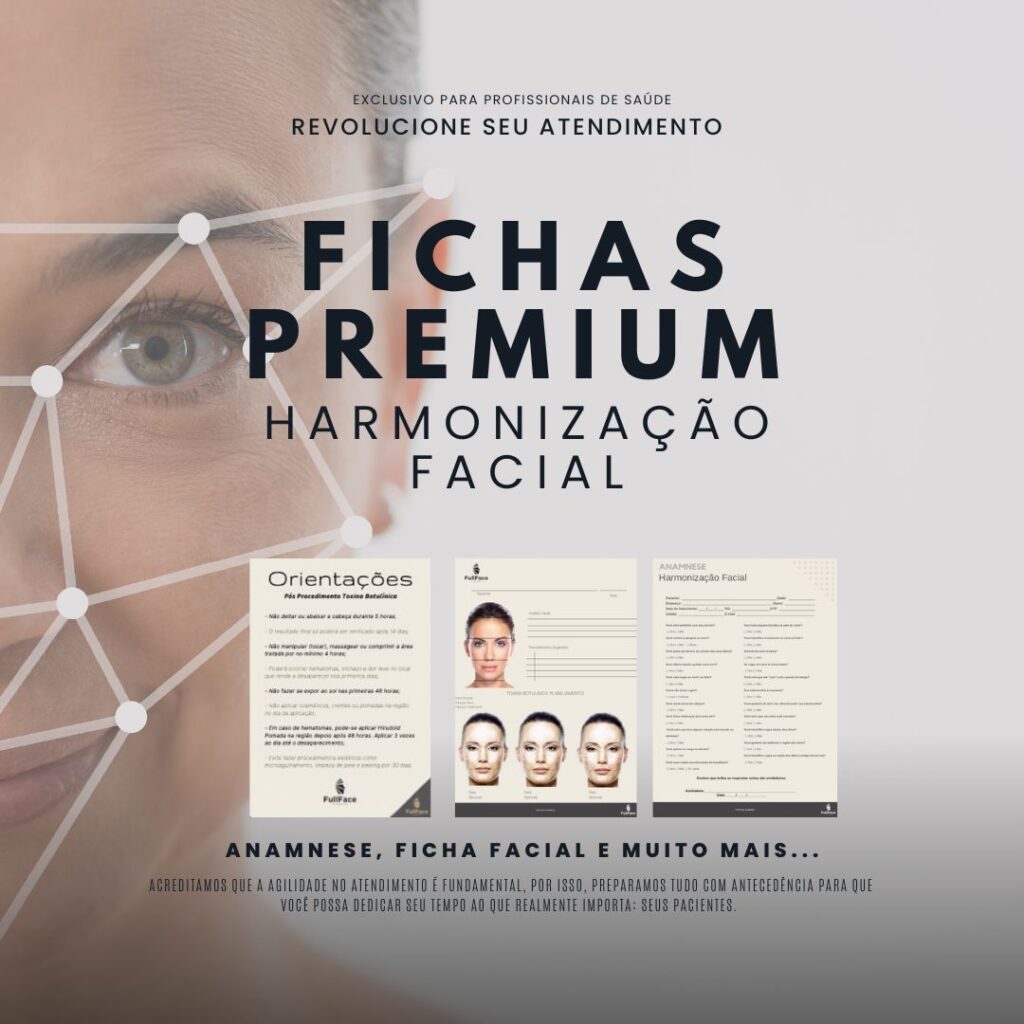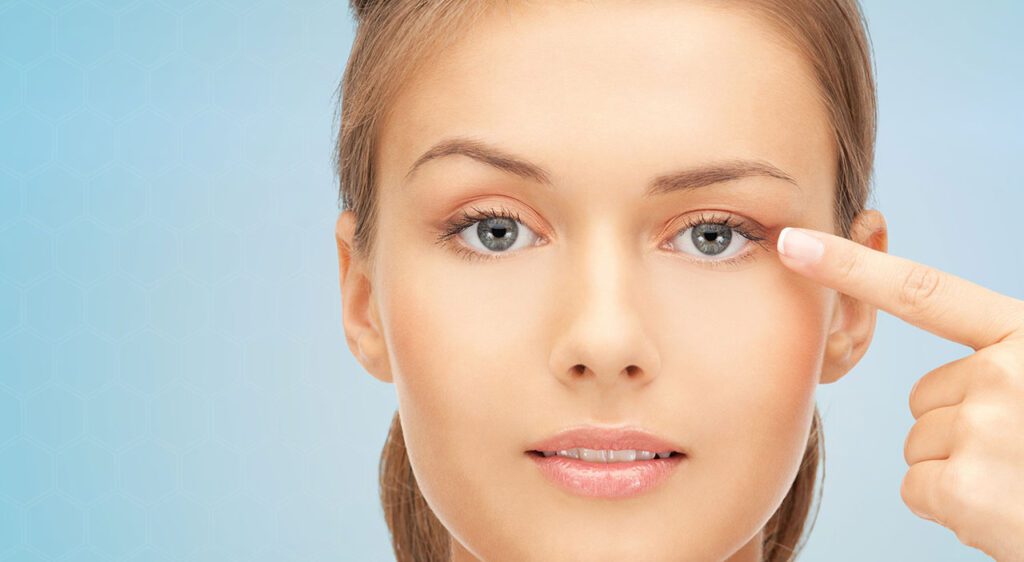If you've had Botox, you know that botulinum toxin is one of the most popular treatments for reducing fine lines and wrinkles. However, some patients may experience droopy eyebrows and eyelids after the procedure.
Fortunately, there are several options for treating eyebrows and droopy eyelids after Botox. In this article, we'll explore these options and help you find the best solution for you.
Drooping eyelid or eyebrow is a common side effect after Botox treatment, occurring within up to 5% of patients when treatment is carried out by an inexperienced injector. The good news is that ptosis of the eyebrows or eyelids can be reduced below 1% cases when the professional is experienced and uses the appropriate technique.
Eyelid Ptosis Treatment Options
To treat droopy eyelid or eyebrow after Botox, there are several options. One of the ways is to wait for the Botox to absorb, which usually takes 3 to 4 months. Another option is to use eye drops or ointments prescribed by the professional to help lift the eyelid. In addition, the use of makeup can also help to disguise ptosis.

(Lyelid drooping after botox)
Why do eyebrows and eyelids droop after Botox?
Before discussing treatment options, it's important to understand why eyebrows and eyelids may droop after Botox. When botulinum toxin is injected into facial muscles, it temporarily paralyzes those muscles. This reduces the appearance of wrinkles and fine lines, but it can also affect other nearby muscles.
If the botulinum toxin spreads to the muscles that control the eyebrows and eyelids, they can become temporarily paralyzed. This can cause your eyebrows to droop or your eyelids to feel heavy.
Fortunately, these side effects are temporary and usually go away within a few weeks. But if you're bothered by the appearance of drooping eyebrows and eyelids, there are treatment options available.
How to treat eyebrow or droopy eyelid after Botox?
If you've noticed that you have a droopy eyebrow or eyelid after Botox, it's important to contact your healthcare professional who performed the procedure right away. They can assess the cause of the ptosis and suggest appropriate treatment options.
Here are some common treatment options for ptosis after Botox:
- Wait: Sometimes eyelid or eyebrow ptosis can improve on its own over time as the Botox wears off. Your doctor may suggest waiting a few weeks or months to see if the ptosis goes away on its own before opting for another treatment.
- Eye drops: If ptosis is caused by too much Botox in the area, some eye drops can be used to stimulate the muscles that control the eyelid. This can help lift the affected area and improve its appearance. (Consult specialist)
- Surgery: In severe cases of ptosis, usually due to sagging, surgery may be necessary to correct the problem. During surgery, the responsible muscle or excess skin is adjusted to improve appearance.
Service Sheets for Facial Harmonization Professionals

📂 Editable 100% PDF documents, customizable with logo.
💎 Developed by renowned experts in the field.
🚀 They make daily work easier with clear and objective information.
⏱️ Speed up patient care.
🔒Increase safety and confidence in the procedures carried out.
🌟Possibility of offering a personalized experience to customers. 🌟
Be ahead in the world of Facial Harmonization with our Service Sheets!
Get it now and raise the level of your practice!
How to prevent eyelid or eyebrow drooping after Botox injection?
There are a few things you can do to help prevent ptosis after your Botox injection:
- Make sure your healthcare provider is experienced and qualified to perform the procedure. This can help reduce the risk of dosing errors or misplaced injection.
- Make sure Botox is stored and diluted correctly before injection. This can help ensure that the dose is accurate and even.
- Follow your care professional's post-treatment instructions carefully to avoid spreading the Botox to other areas and to help ensure the dose is even.
- Make sure your healthcare professional carefully assesses your facial anatomy prior to the injection. This can help ensure that the dose is tailored to your individual physiology.
Another very important point is follow all post-procedure instructions. Avoid rubbing or massaging the treated area as this can cause the Botox to spread to other areas. Also avoid doing intense physical activity for a few hours after treatment.
Finally, be sure to let your dentist know about any pre-existing health conditions or medications you are taking, as these could affect how Botox works in your body.
How to fix a droopy eyelid with Botox?
Botox can also be used to correct a droopy eyelid in some cases by making the muscles that pull the eyelid up more active.
However, this technique requires specialized technique and should only be performed by a trained and experienced healthcare professional. Also, not all cases of eyelid ptosis can be corrected with Botox, so it's important to consult a professional to find out if this technique is right for you.
What is eyelid ptosis?
Eyelid ptosis is the medical term for drooping of the upper eyelid. This can occur naturally due to aging or underlying medical conditions, but it can also be a side effect of botox application.
What is down eye?
“Low eye” is an informal term used to describe the appearance of a droopy upper eyelid. This usually occurs when eyelid ptosis is severe enough to cover a significant part of the eye.
How can eyelid ptosis be a side effect of botox?
Botox is often used to treat facial wrinkles, including frown lines on the forehead. When Botox is injected into the forehead, it can affect the muscles around the eyes, including the muscles that control the opening of the upper eyelid. If these muscles are over-affected, the eyelid may droop and result in eyelid ptosis. (Understand about the Toxin Diffusion Halo)
How long does eyelid ptosis last after botox application?
The duration of eyelid ptosis after botox application may vary depending on the condition. severity of side effect. In mild cases, it may only last a few weeks. In more severe cases, it can last several months.
How is eyelid ptosis treated after botox application?
Treatment for eyelid ptosis after botox application depends on the severity of the side effect. In some cases, eyelid ptosis may go away on its own. In other cases, other treatments may be needed.
How can I avoid eyelid ptosis after botox application?
The best way to avoid eyelid ptosis after botox application is to choose a qualified and experienced professional to perform the procedure. They must have a good knowledge of facial anatomy and know how administer botox safely and accurately. Additionally, it is important to follow all pre- and post-treatment instructions to ensure the best results possible.
Botulinum Toxin Online Course – Full Face Academy

💉 Botulinum Toxin: Preparation, Application and Clinical Cases.
💬 Practical tips to improve your skills.
📋 Explore real cases and success studies.
🚀 Be a high-level professional.
📽️ 4K high resolution content so you can see the smallest details
📚 Exclusive material to improve your knowledge.
📈 Increase your revenue with Marketing techniques to retain recurring patients.
Sources:
Management of Ptosis : Published online 2016 Dec 1.J Clin Aesthet Dermatol. 2016 Dec; 9(12): E1–E4. https://www.ncbi.nlm.nih.gov/pmc/articles/PMC5300727/




